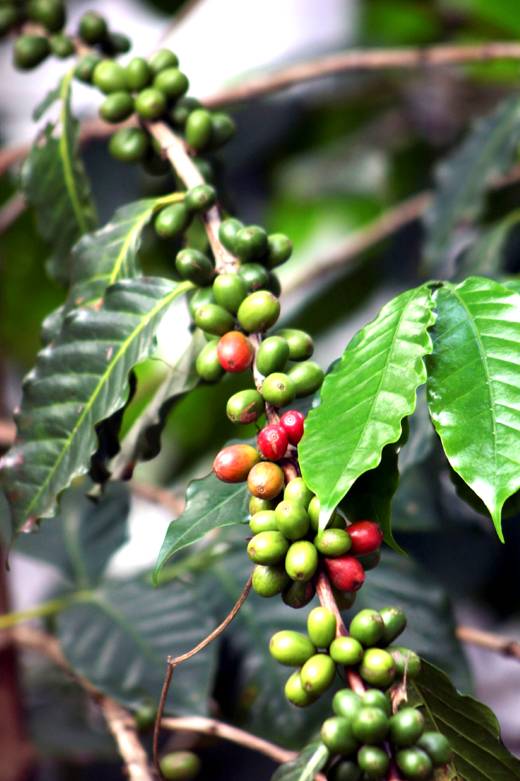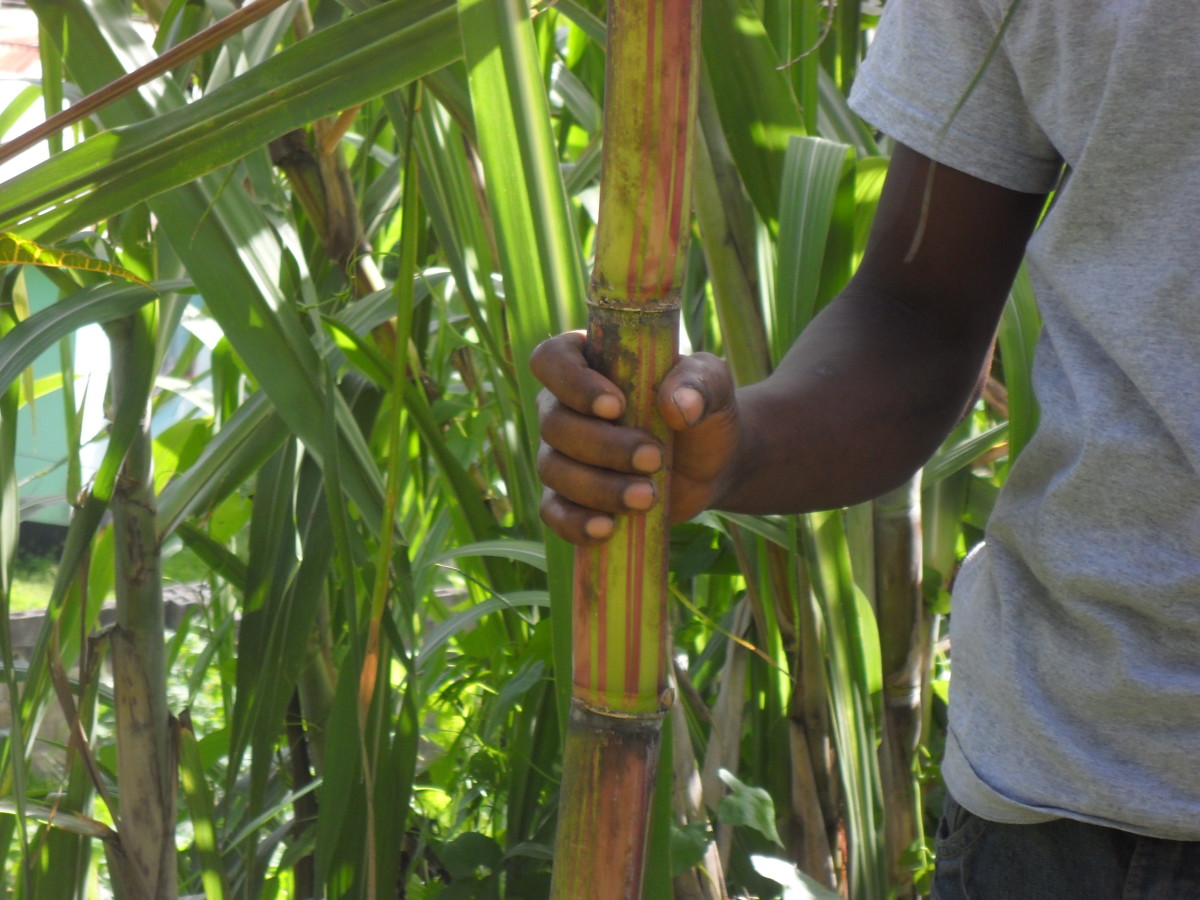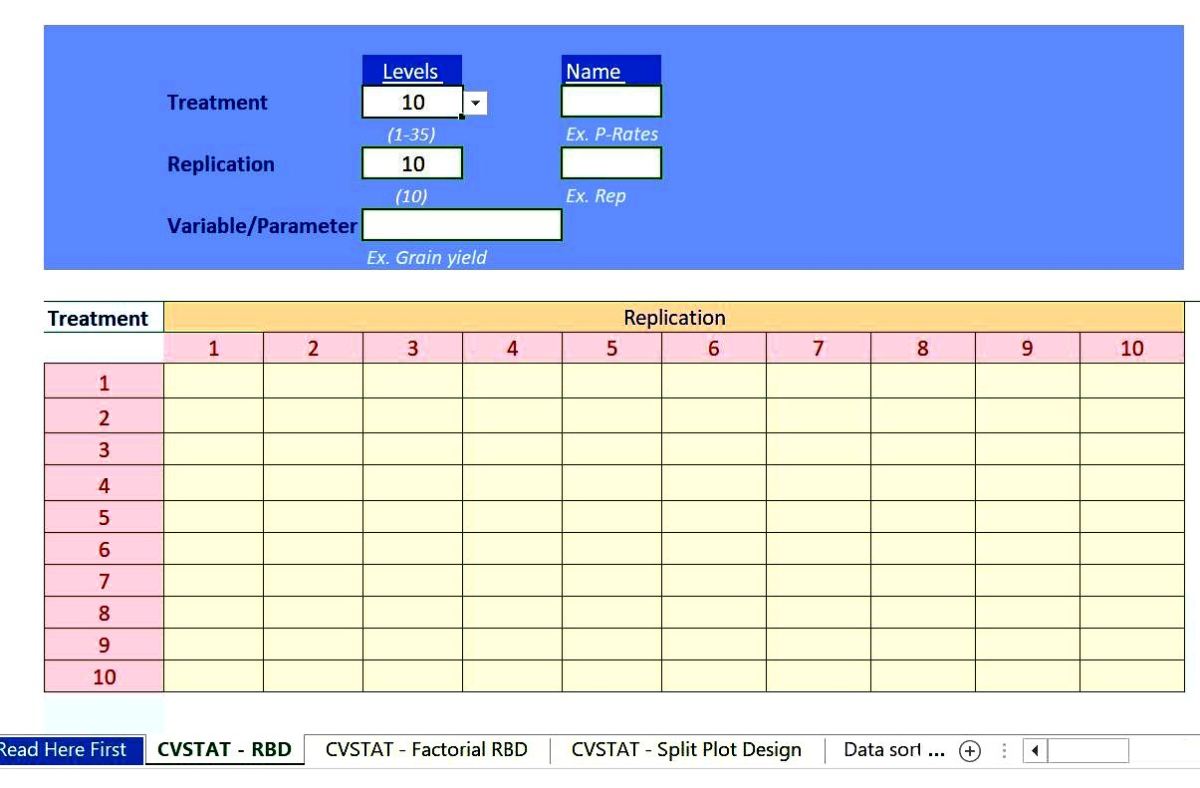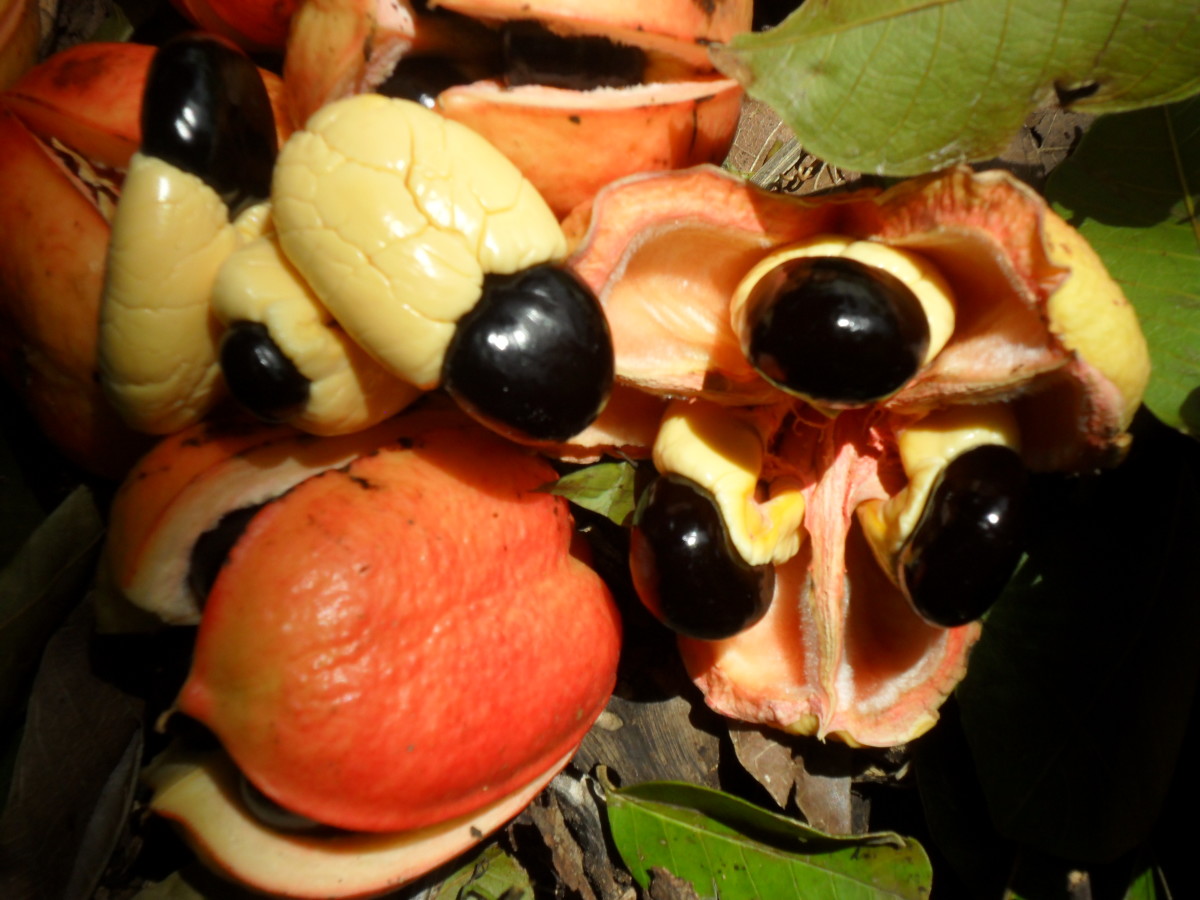Coffee Production (Philippines)
Note:
This hub is part of my research project that I did before and instead of keeping this file forever in my hard drive, I decided to share this to everyone who are interested. This was made possible thru the various references I came across during the time I'm gathering the information.
References can be found in the whole hub but the details are located in the last part.
Thanks and hope this could help! :-)

Coffee is one of the most important crops not only in the Philippines but in other countries as well. As stated in Agriculture magazine, "water maybe the essential liquid for Earth’s life forms, but coffee really gets the body’s motor going. Each day, millions stagger to the kitchen coffee pot". From some references, it is among the top ten agricultural crops in terms of value, no wonder it is indeed important in the economy. "In world trade, coffee ranks first among the enjoyment goods, surpassing alcohol drinks, tea and tobacco." -Agriculture and Fishery Technology Iv' 2005 Ed.
Around in 1200 A.D, it became a crop of many nations but said to be originated in the forests of tropical Africa and its name is possibly derived from Kaffa, province of Abyssinia in East Africa. From there, it was introduced to Arabia before the 15th century. In 1615 the coffee cultivation was introduced in the tropics of Asia and Western Hemisphere (Agriculture and Fishery technology Iv' 2005 Ed).
In the Philippines, based from literature, the coffee industry began in 1740, Spanish time and was a flourishing industry until coffee rust disease came in the 19th century. From Bureau of Agricultural Statistics, production of coffee was estimated at 88,526 MT in 2011.
Regarding its health benefits, "findings show that coffee is healthy and can actually help protect the liver from certain pathologies" (Milan, DPA). Researchers attending a meeting in Milan also said drinking a few cups of coffee a day can even reduce the occurrence of some kinds of tumors. According to D’ Amicis, coffee is rich in antioxidant properties and acts as a mild stimulant. It can even help people lose weight.
Green Coffee Beans
Credits to Agriculture and Fishery Technology 2005, Farm Crop Production and da.gov.ph
I. AGRONOMIC CHARACTERISTICS
The botanical generic name for coffee is Coffea and belongs to Rubiaceae family. The genus includes both cultivated and growing wild.
Trees vary in sizes, from dwarf to thick-trunked forest giants, around 20ft or more in the tropics. Generally they can be found in areas with a medium average annual temperature of 700F, not lower than 550F and much above 800F (Farm Crop Production).
II. VARIETIES
A. Arabica
Known as “Kapeng Tagalog” and thrived in Batangas before it was wiped out by coffee rust at the turn of the 19thcentury. Arabica beans are considered the coffee of the world market because of their excellent flavor and aroma.
- Waxy leaf margin; light green leaf color; thin leaves, pulp and parchment
- Could be grown productively in cooler places from 1200 to 1800 meters above sea level and 1000 to 3000 feet above the sea level in the tropics.
- Start of flowering is 1-2 years after transplanting from the month of December to January. Early bearer (http://hvcc.da.gov.ph/coffee.htm)
- Harvesting is done from November to March. Yields 500-1000kg of clean, dry coffee beans per hectare.
B. Robusta
Locally known as "Kapeng Robusta" which belongs to species Coffea robusta and Coffee canephora. It is more resistant to pests and diseases (da.gov.ph). It is also more popular among growers and widely cultivated in the highlands of Cavite.
- Large umbrella shaped growth with thinner leaves which have more waxy margins.
- The leaves are thinner and have more waxy margins than excelsa coffee. Unlike other varieties, this flowers only once.
- The berries are borne on heavy cluster with the pulp and parchment. Robusta is harder and yields more than the Arabica but has the poorest flavor and aroma among the four varieties.
- Grow in areas from 600- 1200 meters above the sea level.
- The plants start to flower in 2- 3 years after transplanting.
- Yields 1200kg of clean dry coffee beans per hectare.
C. Excelsa
Belongs to the species of Coffea excelsa and locally known as “Kapeng Excelsa”. This variety is more tolerant to drought, nematodes and rust than other varieties. Excelsa has better flavor and aroma than Robusta and Liberica.
- Has wide leaves with smooth edge that are thicker than Robusta but thinner, smoother and more rounded than Liberica.
- Young leaves are usually shiny with bronze violet color.
- The berries are borne in heavy cluster, varying in size and usually bigger than Arabica but smaller than Liberica.
- The pulps and parchment of Excelsa is thicker than the Arabica and Robusta but thinner than Liberica.
- It could be grown from sea level to 600 meters above sea level.
- The plant starts bearing 4 to 5 years from transplanting and flowers from March to July.
- Harvesting is done from January to April. Excelsa yields 1000kg of clean dry coffee bean per ha.
D. Liberica
It is locally known as “Kapeng Barako” or “Kapeng Amerikano” because it produces the biggest berry. This variety belongs to the species of Coffea Liberica and characterized by a very strong pharmocopial taste and flavor. It is tolerant to drought and quite resistant to nematodes.
- It is rounded and borne singly or in a small clusters, has thicker leaves than Excelsa and twice as long as Arabica.
- The pulp is thick and the parchment is woody.
- Grows in a wider type of soil.
- It begins to bear fruits 4 to 5 years from transplanting.
- Yields 500- 1000kg of clean dry coffee beans per ha.
III. SOIL AND CLIMATIC REQUIREMENTS
A. Soil
Coffee thrives on a variety of soil types, soils that are deep, well drained and rich in organic matter. What is important to coffee is the presence of humus which can overcome the handicaps of soil type.
The ideal soil type pH for coffee should be neutral or slightly acid. Coffee usually grows very well on forest soils.
B. Climate
The ideal climate for growth of Arabica is one which has sharply defined wet and dry season. The best coffee grown with this climate is in areas having an altitude of 1200 to 1700 meters, where the annual rainfall is 2000 to 3000 mm and the mean temperature is 16o to 22oCelsius. Coffea canephora grows at lower altitudes, in wet and in humid regions. It has been observed that the best Robusta coffee in Tanganyika is grown at an elevation of 1200 meters with an annual rainfall of about 3000 mm evenly distributed throughout the year and with 17o to 27oC temperatures during the year.
Strong typhoons cause considerable damage to coffee plantations. In Luzon and Visayas, where strong typhoons occur occasionally, coffee should be planted in areas protected from typhoons.
IV. SEED PREPARATION AND VEGETABLES PROPAGATION
A. Seed preparation
1. Coffee is grown from seeds.
2. Gather seeds from disease and pest-free, high yielding trees.
3. Grow coffee plants in the nursery to produce better seedlings. The nursery must be located in the plantation or nearby and accessible to water supply.
4. Three-fourth kg (750 g) of quality seeds is enough to plant a hectare.
5. A 50% allowance of seeds must be considered for ungerminated seeds, poor seedlings and for replanting.
6. Select viable seeds, stir berries on a bucket of water and remove floaters. Those that sink are good ones.
7. Remove pulp by hand or pulping machine, then soak beans in water for 24 hours to hasten the removal of mucilage.
8. Wash beans and discard floaters. Air dry on well-ventilated room for at least 4 days.
9. Keep dried parchment in cool dry place or mix with charcoal to preserve its viability.
10. Germination bed must be 1 meter wide and of convenient length to avoid flooding, raise bed 15cm from ground level.
11. A 1x 20m plot can accommodate one ganta of seeds.
12. Sow seeds on shallow rows at ¾ inch deep and cover with fine soil.
13. Water the seedbed regularly but not too wet and partially shade plants from sunlight.
14. This out and prick seedlings (transplant to another seedbed bag plastic bags) or when 2-3 pairs of leaves have developed.
B. Vegetable propagation
1. Coffee can also be propagated asexually.
2. Clone is use for coffee propagation. It is a part of a plant that is made to reproduce an offspring which carries all the qualities of its parents.
3. Split lengthwise into two halves of a finger sized vertical shoots of about one foot with 4-6 nodes to produce a clone. Partially cut leaves before splitting.
4. Set modal cutting in germination box 1-2 inches apart and 1 inch deep, then place boxes in germination chamber. Nodal cuttings will produce roots and shoots within 45 days.
5. Prick seedlings into individual plastic bags with soil. Full grown seedling with 4 – 6 pairs of leaves could be attained within 6-8months.
6. Coffee plants raised from nodal cuttings bear fruits 18months after transplanting, earlier than plants grow from seeds.
V. ESTABLISHMENTS OF PLANTATION
- Land Preparation
Intensive clearing is necessary for newly opened area (forest area). Plow and harrow twice the open field to check weed growth. Mark places where holes are to be dug.
In many areas of the country, cogon lands have been used for coffee plantations. In such areas, however, cogon grass should first be eliminated before coffee is planted.
To attain this, cogon land should be plowed several times, and then planted to a heavy legumes cover one year before the coffee seedlings are transplanted.
In other areas of the country, forest areas and timber lands are used for coffee planting. In preparing the land in such areas for intensive coffee cultivation, the trees are cut down as in kaingin, and then the trees, branches and leaves are burned in summer. The area is then planted to upland rice. Coffee seedlings are planted at the start of the rainy season. The farmer could continue planting rice for two or more season as the coffee trees grow in size up to 3 to 4 years.
- Lay-out
Planting distance depends on a combination of factors such as variety, topography, soil fertility and management. Varieties with big plant characteristics grown on good soil and favorable climate require wide spacing between plants. The usual distancing of the different varieties are Arabica, 2x3 meters; Robusta, 3 x 3 meters; Excelsa and Liberica, 4.5 x 4.5 meters. Regular pruning has to be done when using this distances. According to other reference like the one which is recommended by Department of Agriculture, spacing are: Arabica 3x 1 to 3x2 meters and 2x2x2x3 m in double row; Robusta 3x1.5 to 3x3 m and 2x2x2x4 m in double row; Liberica and excelsa 4x5 to 5x5.5m.
Straight row planting with an east-west orientation is the recommended layout. Hedge planting in single, double or triple row may also be used, depending on the ease of management and personal preference, the distancing of the plants within the hedge is closer than usual but distance between hedges is also wider. Hedge planting offers the following advantages: it minimizes erosion and allows mechanical operation and faster and cheaper operation in weeding, spraying, fertilization and harvesting.
In step slopes, contour planting or terraced planting should be done across the slope. Single hedge is very appropriate in steep slope.
TRANSPLANTING
Coffee seedlings are ready for transplant when 6 pairs of leaves have been fully developed and with no lateral branches yet. Dig holes and transplant in the field at the start of the rainy season. This will give sufficient time for young plants to establish roots before dry season sets in. Dig hole wide and deep enough to accommodate ball of earth with roots intact. Return topsoil in the hole, then add tablespoons phosphorus fertilizer and mix thoroughly.
VI. CARE OF PLANTATION
- Clean Culture
Weeding should be done regularly around the plants. Shallow cultivation is a good method to follow in flat coffee areas in order to suppress weeds. In sloping areas, where cultivation is not advisable, cutting of weeds regularly should be practiced.
- Mulching
Practice mulching in areas where mulching materials are plenty. The mulch should be spread around the coffee trees. This enriches the soil, conserves moisture, minimizes soil erosion, improves soil textures and control weeds.
- Covercropping
Covercropping with legumes controls weeds, prevents soil erosion and improves soil texture and fertility. The common cover crops are Centrosema, Calopogonium, Pueuraria and Crotolaria. Some plantation operators use siratro as cover crop. Ring weeding around the coffee plants should be done regularly if cover cropping is being practiced. Climbing cover plants, however, that may overcome the coffee plants should be watched. During dry season, take extra precautions to prevent fires that may start from the material of dried leaves of cover crops.
- Fertilization
The general recommendation for non-bearing trees in the absence of soil and tissue analysis, is an equal amount of NPK and ammonium sulfate or urea from 250-300 grams per tree per year, and for bearing trees (7 years and above) 1 kilo of 14-14-14 per year plus urea side dressed at the rate of 300 grams per tree per year.
Non bearing trees (1-3 years old) make shallow canal, furrow 5cm deep around the plant, and place recommended fertilizer in continuous band and cover with soil.
Bearing trees (7 years old) localized placement is recommended for sloping land. Apply fertilizer in holes or trenches made around trees between outside of the crown and one half meter from the base. Broadcast the fertilizer 0.5m for level land.
Coffee plant ranks among the tropical crops with the highest nutrient demands. The kind and amount of fertilizer would vary depending on the type and initial fertility of soil, climate, age of the plant, and cost and availability of fertilizer on a few representative plants.
The best time to apply fertilizer is at the start of rainy season (after blooming) and at the end of the rainy season (after harvesting).
CATCHCROPPING AND INTERCROPPING
Under the trees other crops may be grown. Banana and coffee may be intercropped. Some varieties of ginger are lovers of practical shade and may become productive when partially shaded under fruit trees. Suitable crops for hillside farming include coffee, guava, rambutan, lanzones, bananas, coconut, bamboo, guyabano etc.
Soil management for these crops should however be strictly observed to maintain fertility for a long time. This can only be done with organic fertilizer.
When this program of hillside farming is made successful, the land reform program will also succeed. During the first few years, catchcrops could be planted between coffee rows. Crops like banana, papaya, pineapple and the other fruit crops could be planted between rows of coffee. Ornamental plants could be grown also. Coffee may also be intercropped with coconuts, black pepper and castor beans.
The choice of catch crops or intercrops depends on local demand for the catch crop and their suitability to soil and climate. Legumes are favored as catch crops because of their ability to fix nitrogen in the soil. Catch cropping with coffee may be continued so long as it does not affect the productivity of coffee plants.
PRUNING AND REJUVENATION
To control the size and shade of the trees and to ensure better yield and to make harvesting and management easy, pruning should be done regularly. By pruning, more lateral branches are stimulated to grow. Because coffee berries are borne at the nodes of lateral branches are produced.
Rejuvenative pruning used using the single stem is done by cutting the trunk. For rejuvenation, three vigorous shoots are allowed to growth. Pruning and rejuvenation are usually done after the harvest season. After pruning and rejuvenation, apply fertilizer.
VII. PESTS AND DISEASES AND THEIR CONTROL
A. PESTS
1. Berry Borer or Broca (Stephanoderes hampee)
This is the most destructive and hardest to control. Attack all the stages of fruit after berries become mungo size. Infested young berries turn from normal green color to yellow orange and shortly afterwards, fruit falls prematurely. Presence of empty or partially filled fruits underneath tree is a sure sign of infestation.
CONTROL: the plantation should not be top shaded and trees should be well-thinned of water sprouts. In infected plantations, waste pulp should be composted. All berries in the tree should be totally harvested to break the cycle of breeding. Chemical control by spraying should be started once a mass of adults appears but before they lay eggs. Spraying should be done every 2 weeks, 2-3 times during the season.
2. Coffee Stemborer (Zeuzera Coffee Nietner)
This is the carpenter moth. The larva bores into twigs or the main stem of coffee and feeds on the tissue, causing the terminal position either to break off or wilt and die. Before braking off or wilting, an attacked branch may be detected because of the fecal pellets that issue out through the entrance hole of the larva.
CONTROL: gather all the infected twigs and split them open to destroy the insects inside. The larva may also be killed by fumigating; plugging the hole with a piece of cloth or waste cotton after the fumigant is introduced into the tunnel.
3. a. Scale Insects
They usually attack new foliage especially during the dry season causing serious weakening of the young trees and reduction of yield in the more mature leaves.
b. Green Scale
They suck plant sap. They attack plants in nursery and in the field. The pest becomes abundant during the dry months.
CONTROL: natural enemies usually keep the green scales in check. Spray insecticides every 2-3 weeks interval.
4. Mealy Bugs
They infest the leaves, the young stem, the cluster of berries or flower buds, or the sucker tips, where they suck the sap. Affected portions are covered with spots of sticky transparent honey dew or covered with crust of sooty mold growing on the honeydew. Mealy bugs become most abundant during the dry months. Heavily infested berry trees lose their vigor and become stunted, often causing the failure of the berries to mature properly.
CONTROL: unwanted sucker growth should be removed promptly.
5. Coffee Leaf Folder
Larvae feed on leaves and sometimes attack the flowers and fruits. Adult is a small moth with light brown forewings. The eggs are laid in cluster on leaves. Development period is 5-6 weeks.
CONTROL: collect the infested berries before and after harvest. Pick up all berries, including those that fall on the ground to eliminate breeding and feeding sites of insects. Spray endosulfan at recommended rates at 14-21 days interval or to 4-5 times spraying the fruiting season. The first spraying should be done when the berries attain the size of mungbean seed.
B.DISEASES
1. Rust
the most prevalent and destructive disease of coffee not only in the Philippines but also in most coffee areas in the Eastern Hemisphere especially in Asia, Africa, the Near East, India and Pacific Islands. It is also called oriental leaf disease and caused by Hemileia vastatrix B and Br. The outbreak of this disease in 1891 almost wiped out the flourishing coffee industry in the Philippines.
- its symptoms are small, yellowish spots appear on lower surface of leaves (3-10 mm in diameter) from a few to as many as 50 spots may be found on each leaf. On the yellow spots, bright orange powders like spores are produced. Young lesions appear as yellow discolored areas on both surfaces of the leaves becoming larger and more pronounced in color as they grow older. In advance stages, infected leaves turn yellow; later, they become brown and die. Browning starts from the site of the lesion. The leaves then dry and fall off. Repeated defoliation weakens the trees and often kills many plants.
CONTROL: thorough screening and quarantining of imported of introduced varieties, selection of suitable resistant varieties or strains, good cultivation and proper fertilization. Before any symptom of the disease is observed, spray at 15-20 day intervals esp. before and during the rainy season at the rate of 1-1 and ½ kilos of Vitigram Blue per 100 gal of water.
2. Brown Eye Spot
This is caused by fungus Cercospora coffeicola Br. and Cke. The fungus causes small spots on the leaf, usually with reddish brown margins and eventually turning gray in the center. The fungus also causes mummification of infected coffee berries. It is particularly prevalent among young trees esp. in the nursery and among trees growing in strong sunlight, more than on shaded adult trees. When the leaves are severely infected, they turn yellow, then brown, and finally fall, leaving only a few of the young leaves on a long bare stem.
CONTROL: a particular way of reducing the occurrence of the disease is to develop a canopy of shade over the plantation. Proper attention to soil protection and maintaining adequate moisture content seen to have good effects. Even before any symptom of the disease is noticed, spray every 15-20 days before and during the rainy season at the rate of 1-1 and ½ kg. Vitigram blue per 100 gal of water.
3. Pink Disease
This is caused by a fungus Corticum samonicolor B and Br, infection is first noticed by the cracking of the trunk and lower branches of the tree. The fungus within the bark gradually spreads and penetrates into the living tissues immediately under the bark.
CONTROL: If the diseased portion completely encircles the trunk and the limbs, the plants are often killed.
4. Die Back
This is characterized by drying of the branches and twigs from top and downwards. Appearance of spots with concentric lines on both surfaces of seedlings twigs and berries. If severe affected, leaves fall, twigs and branches dry.
CONTROL: maintain vigor of trees by fertilizing with the right kind and amount of nutrients of proper time, regulate plant growth to prevent overbearing by pruning and or shade.
VIII. HARVESTING, PROCESSING AND STORING
Maturity of berries is 6-8 months after blooming but varies on the environmental factors from region to region. In Mindanao, Arabica flowers in January to May and berries are harvested in August to December. In Luzon, coffee trees bloom just after the first heavy rains in May and June. Arabica and Robusta berries are harvested in late December to March, Excelsa and Liberica later.
Harvest only ripe berries because immature or overripe ones produce inferior beans which cannot be improved by processing. The three types of ripeness which can be included in one harvest are green- ripe, soft-ripe, and hard-ripe.
For best quality coffee beans, harvest hard-ripe (mature, red in color) and soft-ripe (mature, red to dark) berries. For picking the equipment needed are the baskets for the individual picker, holding hooks for bringing branches into the position for picking, ladders and containers for transport of harvested berries to the processing area.
Basket may be made of bamboo or buri leaves which may fasten around the picker’s waist or suspended from the shoulder during the picking operation. Holding hooks may be made of bamboo stick about a meter long to each of which a string is attached. The length of the string is adjusted to the picker’s height. Loop the string around the picker’s feet on the steps to free his hands in picking the berries. Use ladders when picking berries from the branches that are too high to be reached with the aid of holding hooks. The use of ladders may be avoided by pruning to keep the trees conveniently low for pickers when the situation is not possible, a combination of ladder and hook will facilitate picking.
PROCESSING AND FERMENTING
The coffee berries must be pulped on the same day they are harvested to minimize causes of deterioration of the quality of the beans. Farmers commonly dry their coffee beans under the sun for approximately 13% moisture content. Then they undergo the process known as “dry processing” where they (beans) are passed through a huller to remove the dried pulp, parchment and silver skin. It is practiced in areas where pulping machines are not available.
In big commercial coffee plantations, wet method is followed where pulp is removed, mucilaginous material on the parchment skin is being fermented and washing prior to drying.
Pulping machines that could be used are either hand-operated or motor-drives. Homemade pulpers are used in small farms. Planters sort the berries according to size before pulping and pulp one-size groups at a time. This can prevent crushing of the coffee beans during the pulping operation, beans and the pulps are rejected at the opposite sides of the pulper.
Pulped beans are now placed in the large rectangular vats which are the fermentation tank-size of these depends on the quantity of the pulped beans fermented at one time. If tanks are rectangular, each tank should be constructed with rounded corners so that the beans will not stick in the corners. The bottom should be constructed with rounded corners so that the beans will not stick in the corners. The bottom should slope slightly towards the outlet end so that the water can be easily drained. The water can be manage to flow continuously or may be retained, in which case, the beans have to be washed periodically. The beans may have to be fermented for 8-18 hours depending on the temperature, altitude and degree of ripeness of the beans when harvested. Coffee should not be in the fermenting tank longer than necessary, otherwise it will develop a vinegar-like flavor if over-fermented.
The purpose of fermentation is to remove the sticky and slippery mucilage which adheres to the parchment coat of the seed so as to quicken the fermentation process, the mass of beans should be thick enough to generate the most heat in fermentation. The tank should not be full of water but there should be enough water only to make the beans a sticky mass. When fermentation is already complete, the beans are washed thoroughly.
DRYING PARCHMENT COFFEE
Beans are washed, leaving the parchment hull on. About 50% of the weight if coffee after washing is watery; this has to be reduced to a moisture content of 13-15% by drying. It can be done by either sun drying or by mechanical hot air drying.
Sun drying is cheap and makes a slightly higher-quality product but it requires much labor, space and time. The parchment coffee must be laid 2.5 cm thick and turned periodically.
The used of a hot-air drier may necessitate the drying of the beans for a few hours initially under the sun, and then drying is contributed by artificial dryer at gradually increasing temperatures to a maximum of 60%. The beans are dry enough when their parchment can be removed by rubbing a few beans between the palms. The parchment coffee should be cooled immediately after drying.
The beans are ready for curing which involves hulling or peeling the parchment layer off, polishing away the silver skins and then grading foreign materials are finally picked out by hand.
The color of first-class raw beans is bluish-green to grayish-green.
BIBLIOGRAPHY
Asis, Consuelo. Plants of the Philippines. Vol. 1 and 2. 1971. M and L Licudine Enterprises. Pp. 123-124.
”Coffee is Healthy, Researches Claim!”. Manila Bulletin (Foreign Bulletin 4). Vol.386. No. 9. 74 pages. February 9,2005.
Dagoon, Jesse D. Farm Crop Production and Agro-forestry. First Ed. 2000. rex Printing Company INC. Quezon City. Pp. 326-336.
Department of Agriculture. Papaya. www.da.gov.ph
Hartmann, Hudson T., Dale E. Kester and Fred T. Davies Sr. Plant Propagation: Principles, Practices. 5th ed. 1990. Prentice Hall International Ed.
”Stopping the Coffee Berry Borer from Boring Into Profits” Agriculture Magazine: Pointsettia Lady of Bacolod issue. Pp. 56-57, December 2004.
https://books.google.com.ph/books?id=MPjMkLKebBQC&pg=PA58&redir_esc=y&hl=fil#v=onepage&q&f=false
Other Topics
- Wheat Production
Based from the literature, wheat was originally a wild grass which first grew in Mesopotamia, in the Tigris and Euphrates river valleys (middle east) nearly 10,000 years ago. Evidence shows that it has been a major agricultural commodity since the... - Papaya Production
Papaya is a well known plant in the Philippines, they are very common food items in the local markets which are good sources of Vitamin A, B, and C. Its productive life is about 3 years and the plant's...







